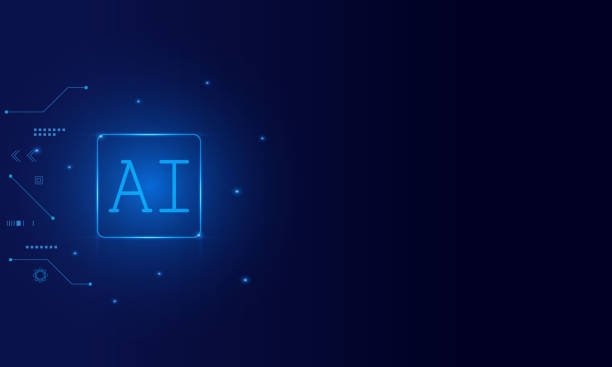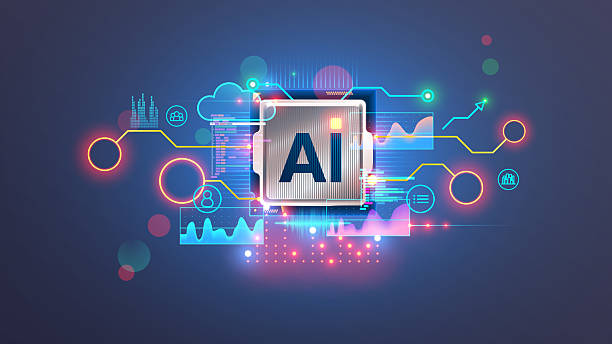What is an AI Robot and How Does it Work?

#AI_Robot (Artificial Intelligence Robot) is a combination of two important technological fields: robotics and artificial intelligence.
Unlike traditional robots that merely execute predefined programs, these robots are capable of understanding their environment, learning from experiences, and making decisions based on available information.
Artificial intelligence enables robots to perform more complex tasks and adapt to changing conditions.
The operation of an AI robot typically includes the following stages: Environmental Perception: The robot gathers information about its surroundings through various sensors such as cameras, microphones, touch sensors, etc. Information Processing: The collected information is processed by a powerful processor.
AI algorithms help the robot interpret this information and identify patterns and relationships within it.
Decision-Making: Based on the processed information, the robot selects the best course of action using decision-making algorithms. These algorithms can include machine learning methods, neural networks, and other AI techniques. Execution: The robot executes the decision it has made using its actuators (such as motors, arms, etc.).
This stage involves movement, object manipulation, and performing other physical tasks.
Learning: An AI robot learns from its experiences and improves its performance.
This learning can occur through various methods such as reinforcement learning, supervised learning, and unsupervised learning.
In summary, an AI robot is a complex system that, by combining robotics and artificial intelligence, is capable of performing intelligent tasks and adapting to its surroundings.
Are you falling behind in the competition with large online stores?
Rasaweb makes your business online with professional e-commerce website design and increases your market share!
✅ Increase brand credibility and customer trust
✅ Easy shopping experience leads to more sales
⚡ Act now to get a free website design consultation!
Applications of AI Robots in Various Industries
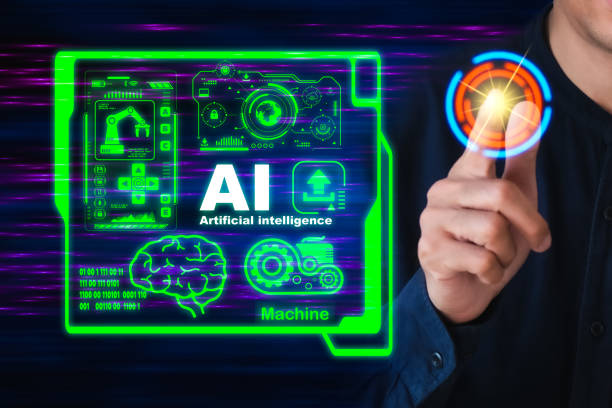
AI robots are currently employed in various industries and have a significant impact on productivity, accuracy, and safety.
Some key applications of these robots include:
Manufacturing Industry: AI robots are used to perform repetitive, heavy, and dangerous tasks on production lines.
These robots can assemble parts, perform quality inspections, and move materials.
The use of AI robots in the manufacturing industry leads to increased production speed, reduced errors, and improved working conditions.
Healthcare: AI robots have applications in surgery, nursing, rehabilitation, and pharmacy.
These robots can perform complex surgeries with high precision, assist patients with rehabilitation exercises, and automatically dispense necessary medications.
AI robots can also aid in diagnosing diseases and providing medical consultations to patients.
Customer Services: AI robots are used as chatbots on websites and applications to answer customer questions and provide technical support.
These robots can be available 24 hours a day, 7 days a week, and help customers resolve their issues.
The use of AI robots in customer services leads to reduced costs and improved customer satisfaction.
Agriculture: AI robots are used in agriculture for planting, cultivating, and harvesting crops.
These robots can automatically plant seeds, remove weeds, and harvest produce.
The use of AI robots in agriculture leads to increased productivity, reduced water and fertilizer consumption, and improved crop quality.
Transportation: AI robots are applied in self-driving cars, drones, and public transportation systems.
Self-driving cars can operate without human intervention, and drones can deliver packages to their destinations.
The use of AI robots in transportation leads to a reduction in accidents, decreased traffic, and improved efficiency of the transportation system.
Advantages and Disadvantages of Using AI Robots
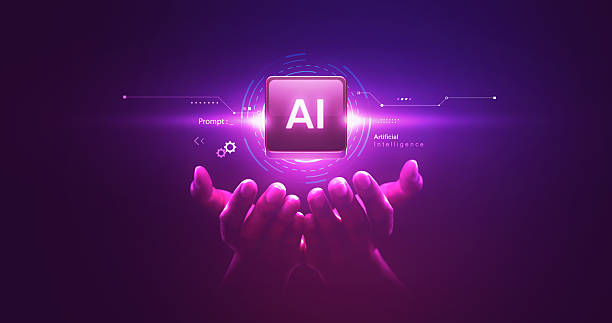
The use of #AI_Robot offers numerous advantages, but also comes with disadvantages that need to be considered. Advantages: Increased Productivity and Efficiency: AI robots can perform tasks faster and more accurately than humans, leading to increased productivity and reduced costs. Improved Safety: AI robots can work in hazardous environments, preventing harm to humans. Reduced Errors: AI robots make fewer mistakes than humans, leading to improved quality of products and services. 24/7 Availability: AI robots can be available 24 hours a day, 7 days a week, leading to improved customer service. Cost Reduction: The use of AI robots can lead to cost reductions in the long run, as the need for human labor decreases.
Disadvantages: High Cost: Purchasing and maintaining AI robots can be expensive. Complexity: AI robots are complex systems that require specialized expertise for design, construction, and maintenance.
Unemployment: The use of AI robots can lead to job displacement in some industries. Ethical Concerns: The use of AI robots can raise ethical concerns regarding accountability, privacy, and discrimination.
Over-reliance: Excessive reliance on AI robots can lead to a decrease in human skills and vulnerability to cyberattacks.
Overall, the use of AI robots can bring many benefits, but their disadvantages must also be considered, and necessary measures taken to mitigate their negative effects.
AI Robots
What Will Be the Future of AI Robots?

The future of AI robots is very bright and full of potential.
With continuous advancements in artificial intelligence, robotics, and machine learning, AI robots are expected to play a more significant role in our daily lives.
Some key trends shaping the future of AI robots include: Increased Robot Intelligence: Future robots will be capable of performing more complex tasks, making better decisions, and interacting more naturally with humans. Expanded Applications: AI robots will be employed in new industries and areas, including education, entertainment, elder care, and space exploration. Reduced Costs: With increased production and technological improvements, the costs of purchasing and maintaining AI robots are expected to decrease, leading to their wider adoption in small and medium-sized businesses and homes. Improved Human-Robot Interaction: Future robots will be able to interact more naturally and effectively with humans, including through voice, image, and body language. Development of Autonomous Robots: Self-driving cars, drones, and other autonomous vehicles will be more widely used, leading to reduced accidents, decreased traffic, and improved efficiency of transportation systems.
Overall, the future of AI robots is full of opportunities and challenges.
By developing technology and addressing ethical and social issues, the potential of these robots can be leveraged to improve human lives and solve global problems.
#AI_Robot AI Robots
Are you falling behind in the competition with large online stores?
Rasaweb is your solution with modern and user-friendly e-commerce website designs!
✅ Significant increase in conversion rates and sales
✅ Creation of strong branding and building customer trust
⚡ Get a free e-commerce website design consultation from Rasaweb!
Challenges Facing the Development of AI Robots

The development of AI robots faces numerous challenges that must be overcome to realize the full potential of this technology.
Some of these challenges include:
Ethical Issues: The use of AI robots can raise ethical concerns regarding accountability, privacy, discrimination, and security.
For example, who will be responsible for the mistakes of a self-driving robot? How can the misuse of AI robots be prevented?
Social Issues: The use of AI robots can lead to job displacement in some industries and exacerbate social inequalities.
How can the negative effects of this technology on employment and inequality be mitigated?
Technical Issues: The development of AI robots requires significant advancements in artificial intelligence, robotics, machine learning, and other related technologies.
How can robots be built that are smarter, more reliable, and safer?
Legal Issues: Current laws and regulations for the use of AI robots are insufficient and need to be reviewed and updated.
How can laws be enacted that protect human rights while also encouraging innovation?
Security Issues: AI robots can be vulnerable to cyberattacks and used for malicious purposes.
How can the security of AI robots be ensured and their misuse prevented? #AI_Robot AI Robots
Machine Learning and Its Role in AI Robots

Machine Learning is a subfield of artificial intelligence that enables robots to learn from data and improve their performance without explicit programming.
Machine learning plays a very important role in the development of AI robots, allowing them to perform more complex tasks and adapt to changing conditions.
Some applications of machine learning in AI robots include:
Object Recognition: Using machine learning algorithms, robots can detect various objects in their surroundings, including humans, vehicles, and obstacles.
This capability is crucial for autonomous robots, industrial robots, and domestic robots.
Navigation: Using machine learning algorithms, robots can navigate complex and unknown environments and reach their destinations.
This capability is crucial for autonomous robots, search and rescue robots, and space exploration robots.
Planning: Using machine learning algorithms, robots can create complex plans to perform various tasks.
This capability is crucial for industrial robots, service robots, and domestic robots.
Human Interaction: Using machine learning algorithms, robots can interact with humans more naturally and effectively, including through voice, image, and body language.
This capability is crucial for service robots, educational robots, and entertainment robots.
In summary, machine learning is a key technology for the development of AI robots, enabling them to become smarter, more adaptive, and more efficient.
#AI_Robot AI Robots
Main Components of an AI Robot
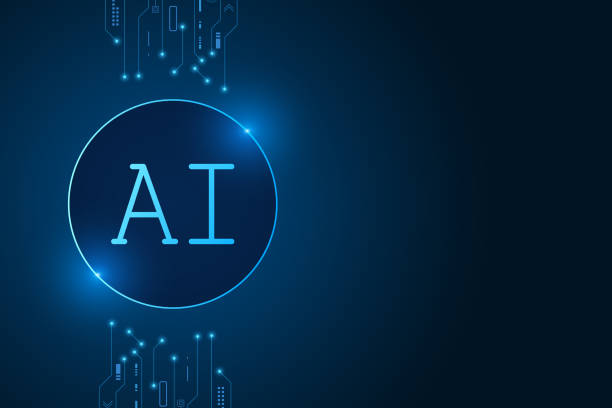
An #AI_Robot consists of several main components that work together to enable the performance of intelligent tasks.
These components include:
Sensors: Sensors collect information about the robot’s surroundings.
This information can include images, sounds, temperature, pressure, distance, and other physical parameters.
There are various types of sensors, including cameras, microphones, touch sensors, proximity sensors, and force sensors.
Processor: The processor processes the information collected by the sensors and makes the necessary decisions to perform various tasks.
The processor is usually a powerful computer equipped with AI algorithms, machine learning, and other related software.
Actuators: Actuators enable the robot to move within its environment and interact with it.
Actuators can include motors, arms, wheels, legs, and other mechanical components.
Power Source: The power source provides the necessary energy for the robot’s operation.
The power source can include batteries, solar cells, and other energy sources.
Software: The robot’s software includes artificial intelligence algorithms, machine learning, control, and other programs that govern the robot’s functionality.
Robot software is typically written in programming languages such as Python, C++, and Java.
Types of AI Robots Based on Application
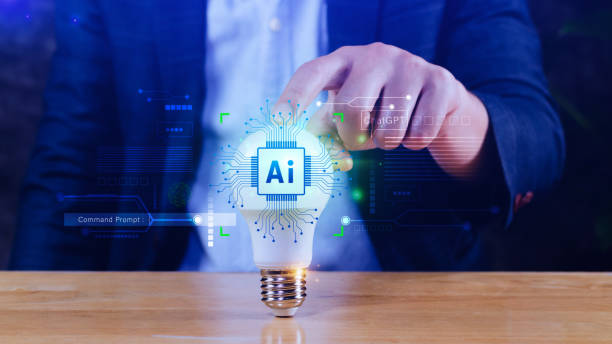
#AI_Robot are divided into various types based on their application.
Some of these types include:
Industrial Robots: These robots are used in the manufacturing industry to perform repetitive, heavy, and dangerous tasks.
Industrial robots typically have powerful and precise arms and can operate at high speeds.
Service Robots: These robots are used in service environments such as hospitals, hotels, and restaurants to perform various tasks like transportation, cleaning, and providing customer services.
Service robots usually have a friendly and interactive appearance and can communicate naturally with humans.
Domestic Robots: These robots are used in homes for various tasks such as cleaning, gardening, and elder care.
Domestic robots typically have a small size and reasonable price, and can operate autonomously.
Military Robots: These robots are used in military environments to perform various tasks such as reconnaissance, mine disposal, and combat.
Military robots usually possess advanced capabilities such as night vision, facial recognition, and weapon carrying.
Space Robots: These robots are used in space to perform various tasks such as planetary exploration, satellite repair, and construction of space stations.
Space robots typically have high resistance to harsh space conditions and can operate autonomously.
AI Robots
Does your current e-commerce website design lead to losing customers and sales?
Rasaweb is your solution with modern and user-friendly e-commerce website designs!
✅ Significant increase in conversion rates and sales
✅ Creation of strong branding and building customer trust
⚡ Get a free e-commerce website design consultation from Rasaweb!
How to Design and Develop an AI Robot?
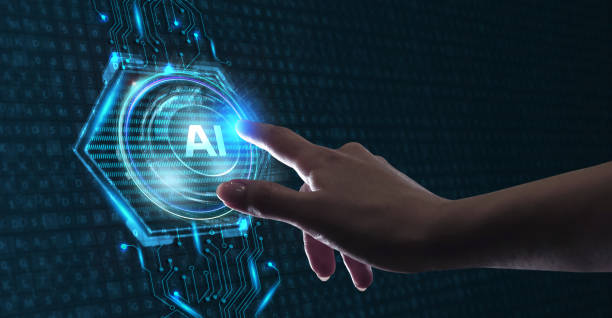
Designing and developing an #AI_Robot is a complex, multi-stage process that requires expertise in various fields such as artificial intelligence, robotics, electronics, and software.
The main stages of designing and developing an AI robot include:
Defining the Goal: The first step in designing and developing an AI robot is to define the purpose of building the robot.
What is the robot being built for? What tasks should it perform?
Hardware Design: After defining the goal, the robot’s hardware must be designed.
The robot’s hardware includes sensors, a processor, actuators, a power source, and other physical components.
Software Design: After designing the hardware, the robot’s software must be designed.
The robot’s software includes artificial intelligence algorithms, machine learning, control, and other programs that control the robot’s functionality.
Prototyping: After designing the hardware and software, a prototype of the robot must be built.
This prototype is used to test and evaluate the robot’s performance.
Testing and Evaluation: After building the prototype, it must be tested and evaluated.
In this stage, the robot’s performance is examined under various conditions, and its problems and flaws are identified.
Optimization: After testing and evaluation, the robot must be optimized.
In this stage, the problems and flaws identified in the previous stage are resolved, and the robot’s performance is improved.
Mass Production: After optimization, the robot can be mass-produced.
In this stage, the robot is produced in large quantities and introduced to the market.
#AI_Robot AI Robots
The Impact of AI Robots on Our Daily Lives
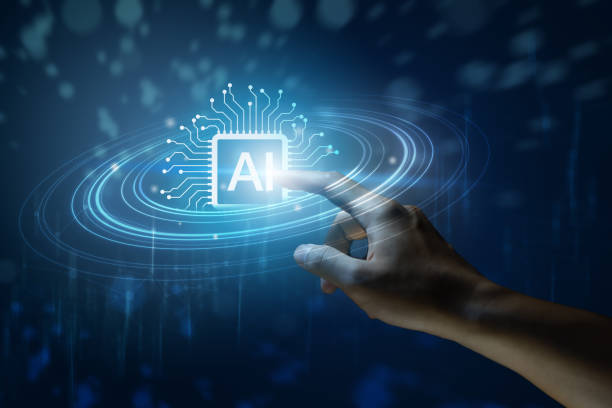
#AI_Robot currently have a significant impact on our daily lives, and this impact is expected to increase in the future.
Some of the impacts of AI robots on daily life include:
Improved Quality of Life: AI robots can help us with daily tasks such as house cleaning, gardening, shopping, and cooking.
This can lead to an improved quality of life and increased free time.
Increased Productivity: AI robots can assist us in work environments, such as performing repetitive, heavy, and dangerous tasks.
This can lead to increased productivity and reduced costs.
Improved Health: AI robots can assist doctors in diagnosing and treating diseases.
This can lead to improved health and increased life expectancy.
Creation of New Opportunities: AI robots can create new opportunities in various fields, such as generating new jobs, developing new products and services, and solving global problems.
Changing Our Interaction with Technology: AI robots can change how we interact with technology.
In the future, instead of using computers and smartphones, we will interact with robots that can naturally talk to us, answer our questions, and address our needs.
AI Robots
Frequently Asked Questions
| Question | Answer |
|---|---|
| What is an AI robot? | It is a robot that uses artificial intelligence capabilities for environmental perception, reasoning, learning, and decision-making to perform complex tasks autonomously. |
| What is the main difference between a regular robot and an AI robot? | AI robots can learn and adapt to their environment, while regular robots typically operate based on fixed, predetermined programming. |
| In what areas are AI robots used? | In fields such as industry (production lines), medicine (robotic surgeries), services (customer support, smart vacuum cleaners), exploration (space and underwater), and entertainment. |
| How do AI robots learn? | They acquire new skills through Machine Learning and Deep Learning algorithms by analyzing large datasets and identifying patterns. |
| Can AI robots have emotions? | Currently, no. They can identify or simulate emotions, but they do not experience real emotions like humans. |
| What are the most important advantages of using AI robots? | Increased productivity, reduction of human error, performing dangerous or repetitive tasks, and providing innovative and efficient services. |
| What challenges exist in the development of AI robots? | The need for abundant and high-quality data, algorithmic complexity, ethical issues, cybersecurity, and high research and development costs. |
| Are AI robots dangerous to humans? | With adherence to safe design principles and ethical regulations, no. Concerns are more related to social and economic impacts such as changes in the job market. |
| What is an example of an AI robot in daily life? | Smart vacuum cleaner robots (like Roomba) that automatically map and clean the house, or smart voice assistants (like Siri and Alexa). |
| How is the future of AI robots predicted? | They are expected to become smarter, more autonomous, and capable of more complex interactions with humans, playing a more prominent role in industry, medicine, transportation, and daily life. |
And other advertising agency services from Rasaweb in the field of advertising
- Smart Digital Advertising: A professional solution for improving SEO rankings with a focus on Google Ads management.
- Smart Conversion Rate Optimization: A combination of creativity and technology to increase website traffic through intelligent data analysis.
- Smart Advertising Campaign: A dedicated service for growth in customer behavior analysis based on key page optimization.
- Smart Google Ads: A professional solution for improving SEO rankings with a focus on key page optimization.
- Smart Marketplace: A new service to enhance customer behavior analysis through Google Ads management.
And over hundreds of other services in the field of internet advertising, advertising consultation, and organizational solutions
Internet Advertising | Advertising Strategy | Advertorial
Sources
What is Artificial Intelligence and How Does it Work?
Applications of Artificial Intelligence in Daily Life
Smart Robots: Our Future
The Difference Between AI, Machine Learning, and Deep Learning
? Ready to transform your business in the digital space? Rasaweb Afarin Digital Marketing Agency, by providing comprehensive services including modern UI website design and SEO optimization, is with you on the path to achieving online success.
📍 Tehran, Mirdamad Street, Next to Central Bank, Southern Kazeroun Alley, Ramin Alley, No. 6

